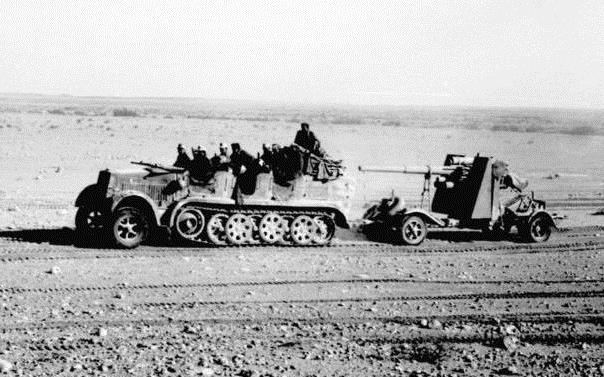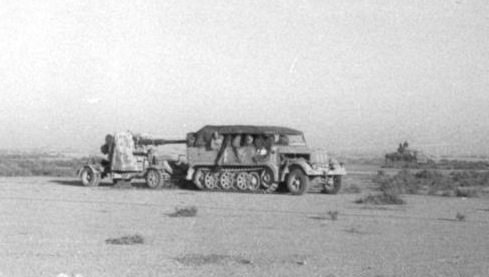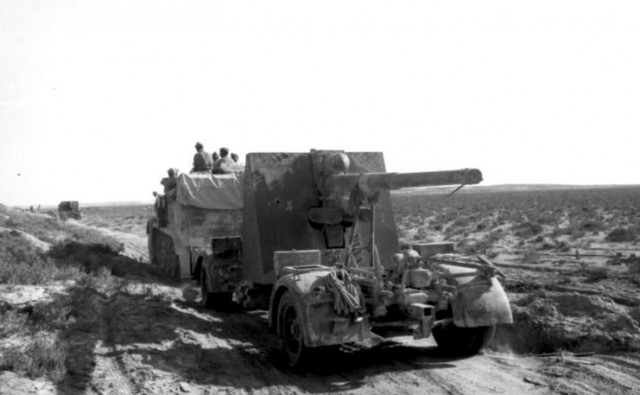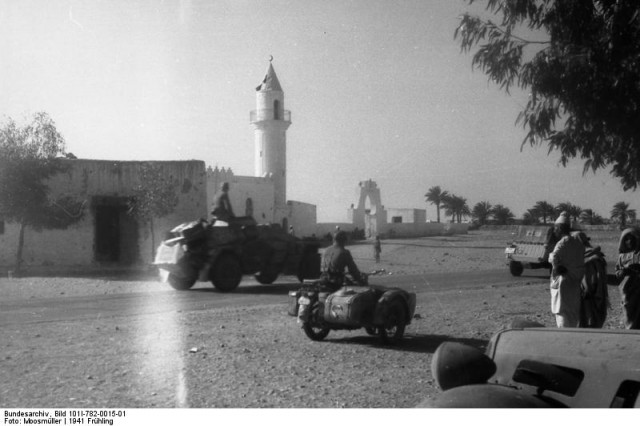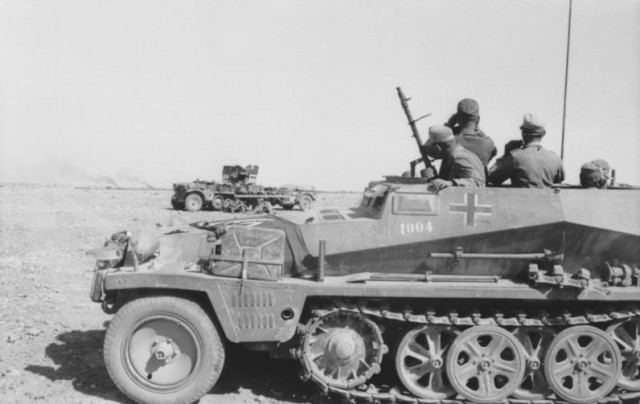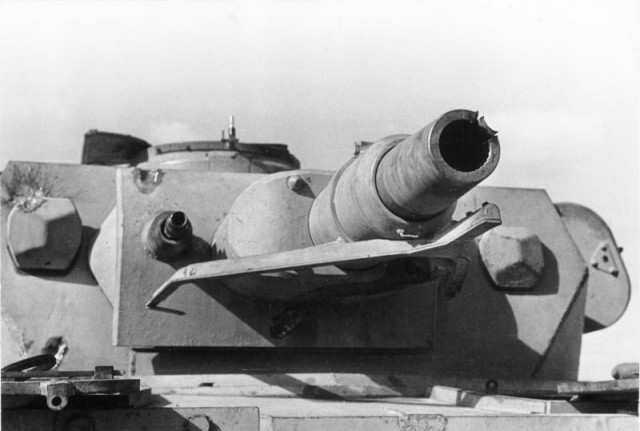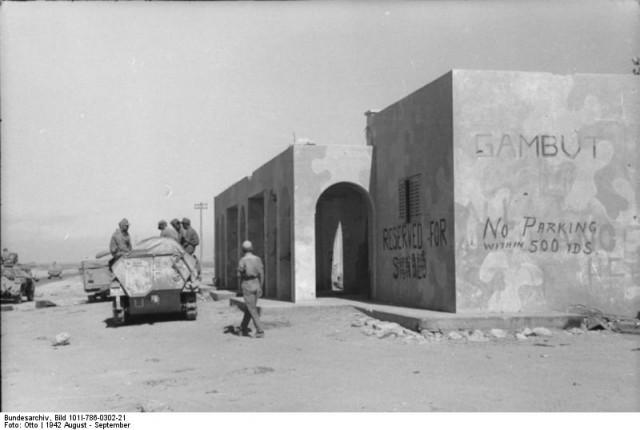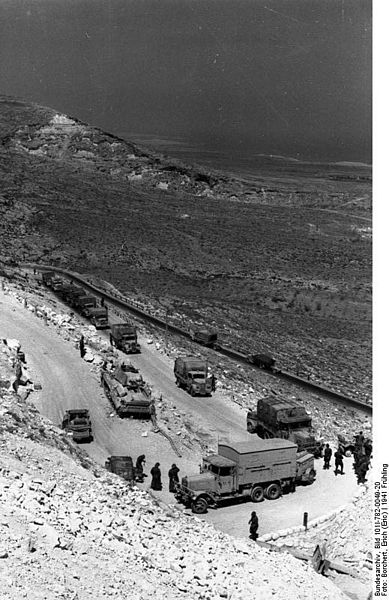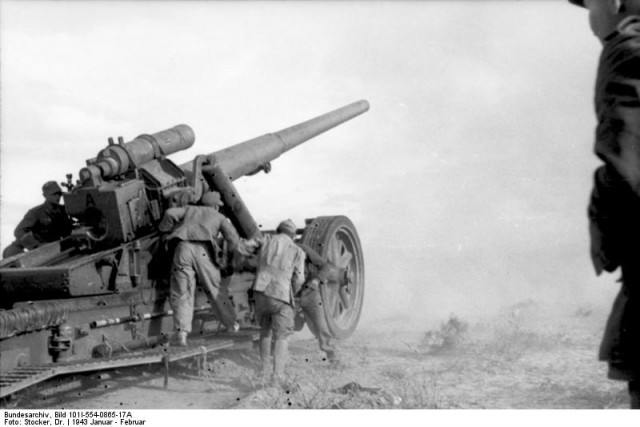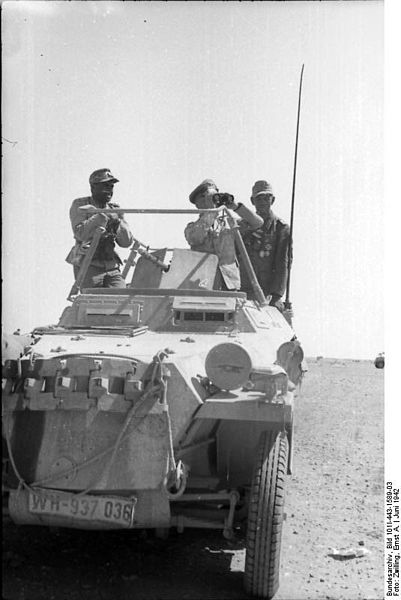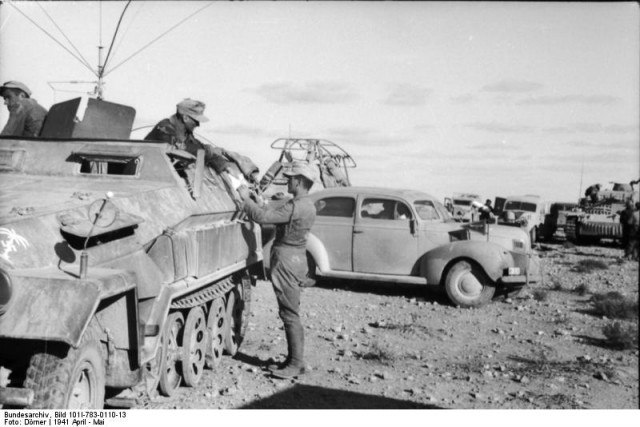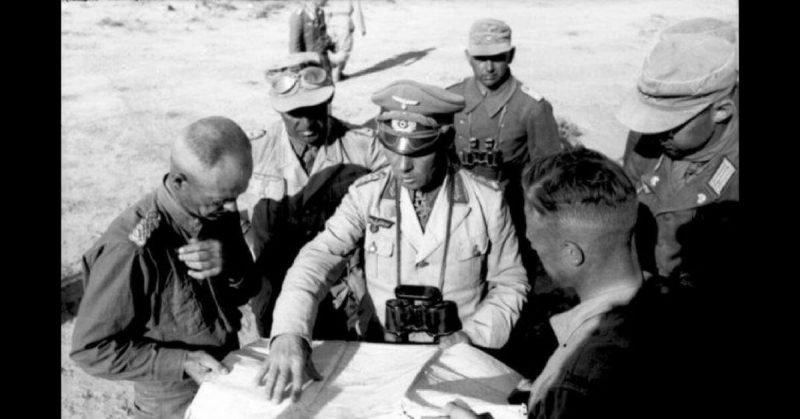The Afrika Korps or German Africa Corps was the German expeditionary force in Africa during the North African Campaign of World War II.
First sent as a holding force to shore up the Italian defense of their African colonies, the formation fought on in Africa from March 1941 until its surrender in May 1943. Its commander was the infamous Erwin Rommel.
Erwin Rommel
Rommel first gained attention in the First World War. As a young German officer, he experienced mobile warfare on the Romanian and Italian fronts, avoiding the bogged down trench fighting. Smart and courageous, he earned several of Germany’s highest honors, including two Iron Crosses.
Politically astute, Rommel ingratiated himself with the Nazi leadership as they took control of Germany. His style of command involved more micro-management than was usual in Germany, but because of his political connections, it did not hinder his career.
At the start of the Second World War, Rommel commanded the troops guarding Hitler’s headquarters during the invasion of Poland. He then used Hitler’s favor to win command of a Panzer Division, skipping the usual line for a promotion.
In France, Rommel proved his worth as a tank commander. Using the boldness that had won him distinction in the previous war, he led his division in a decisive advance. He waded into icy waters and wielded a machine gun during a difficult river crossing. His troops were credited with capturing 100,000 Allied prisoners.
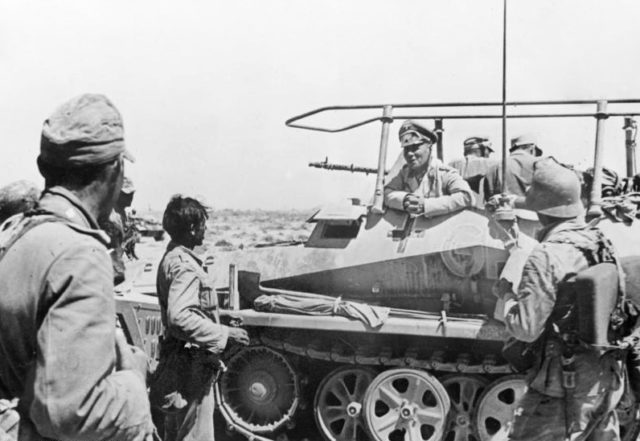
Having gained a solid reputation as a military genius of the highest order, Rommel was promoted to Lieutenant General and placed in command of the newly formed Afrika Korps, which had been created with the intention of being sent to Libya to assist Italian troops struggling to cope with British advances into Axis territory in North Africa.
Ignoring orders to assume a defensive posture, Rommel immediately launched a lightning assault on the startled British forces and his Afrika Korps advanced rapidly, driving General Waverley out of his fortified position at Benghazi.
In an attempt to take advantage of the confusion that resulted from the fall of Benghazi, Rommel continued to press forward, driving the British before him and finally enveloping the enemy within Tobruk.
Rommel placed Tobruk under siege but met with stiff and resolute resistance from British and Australian soldiers.
In June 1941, Wavell launched an Allied counterattack, Operation Battleaxe, but was severely mauled by Rommel’s Afrika Corps.
After that, Rommel notched up a string of victories, more often than not against vastly superior forces, including Tobruk, Gazala, and El Alamein.
In the process, he not only earned a formidable reputation for personal bravery and strategic genius but also for gallantry and mercy, as he amply demonstrated when he sent medical supplies to New Zealand forces within the Allied lines.
With a lack of reinforcements and supplies hampering his ability to complete a knockout blow to the Allied forces in North Afrika, Rommel was forced to go on the defensive and then later pull out his remaining forces from the North African theater.
Briefly involved in the defense of Italy, Rommel was then moved to Normandy. He prepared defenses and fought against the 1944 Allied invasion. However, his tactical flexibility was limited by Hitler’s commands.
In July 1944, he was severely wounded when a British fighter strafed his car. While recuperating, he was implicated in a plot to kill Hitler. Given a choice between suicide and a show trial, he took his own life on October 14.
These often-chilling pictures offer us a fascinating insight into the hardware the Allies were up against in this theatre of WW2. The campaign was hard and bloody and left many hundreds of thousands dead, missing, wounded, or captured, but the fascist alliance of Germany and Italy was ultimately driven from the land. After the campaign, the Allies would turn their attention to Italy, where they would win another crucial victory in the fight against militant fascism in Europe.
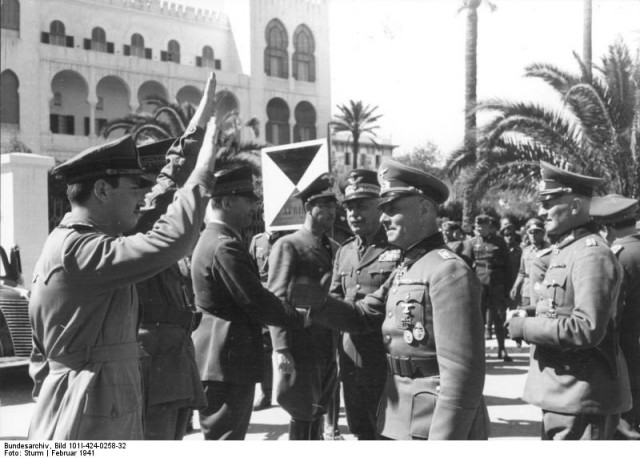
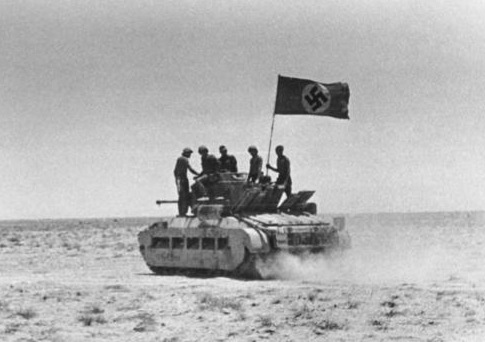
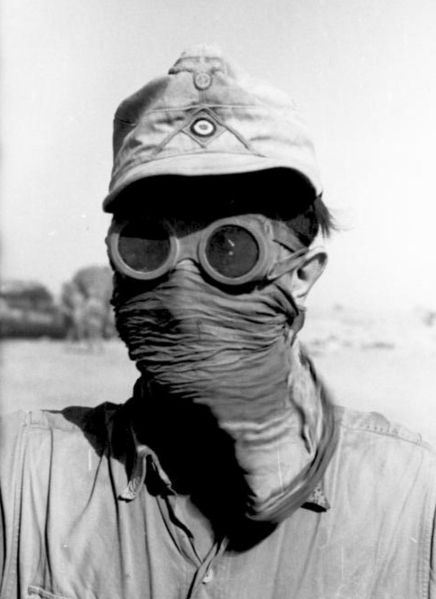
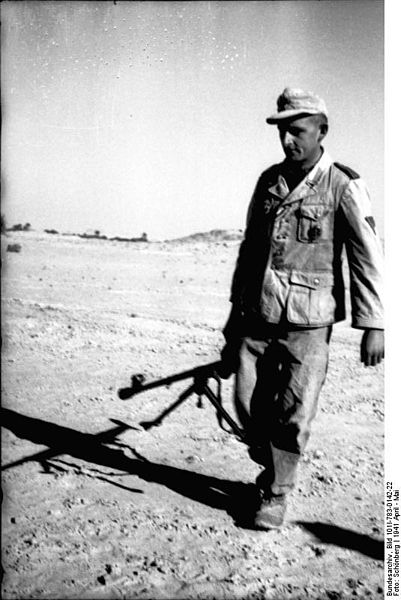
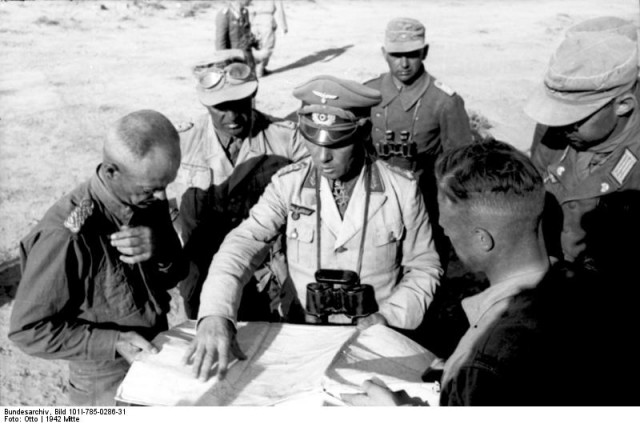
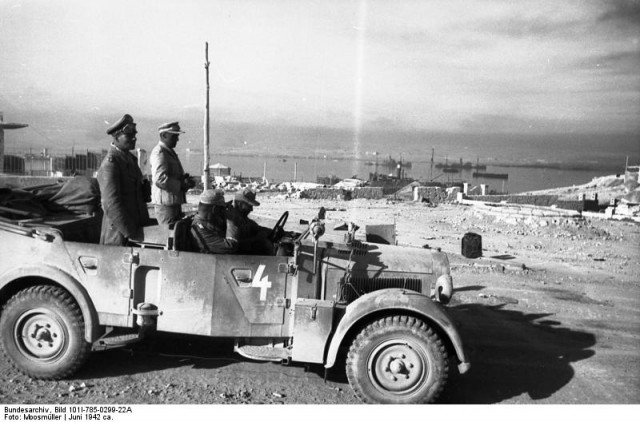
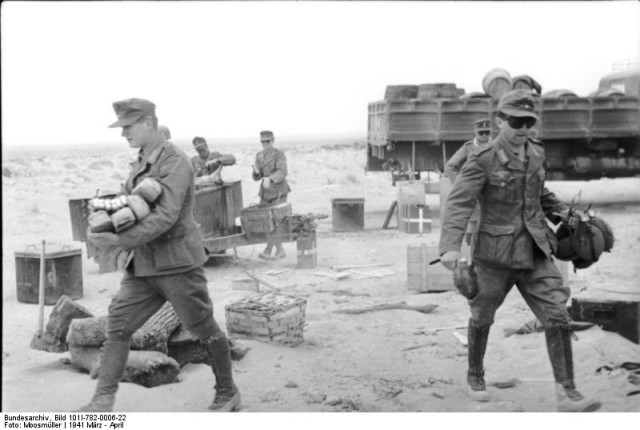
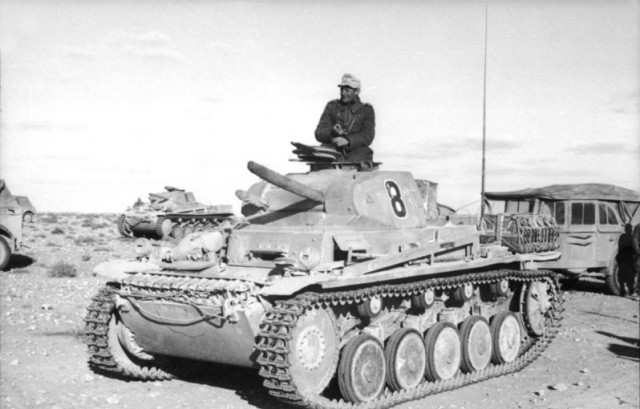
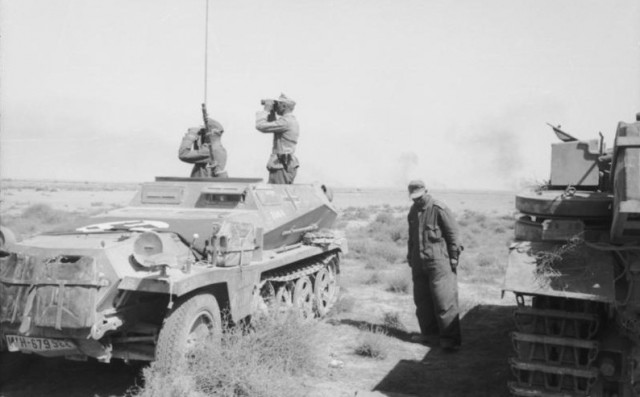
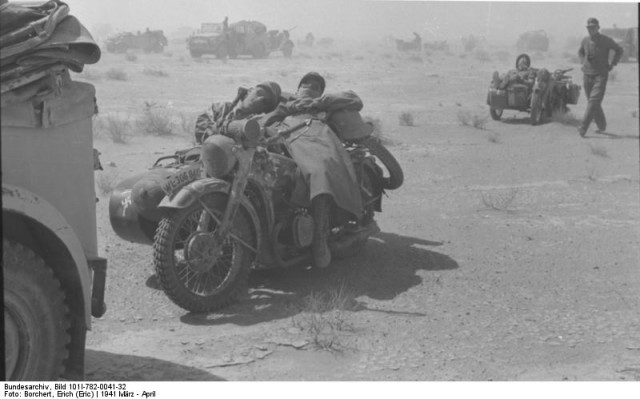
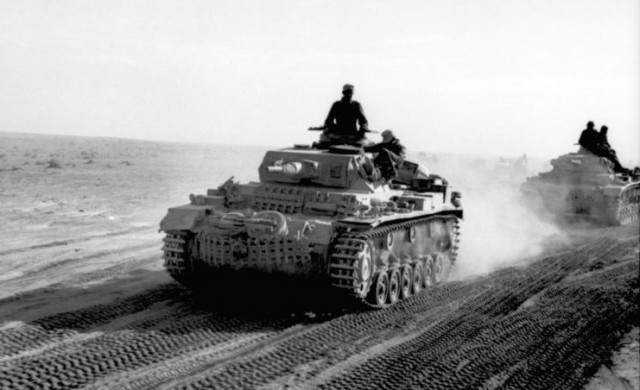
![1.6.1942 Nach der Schlacht bei Sidi Mustah [...] Auf Hˆhen von Sidi-Mustah s¸dwestlich von Tobruk](https://www.warhistoryonline.com/wp-content/uploads/sites/64/2015/06/Bundesarchiv_Bild_101I-443-1575-19A_Nordafrika_Sch%C3%BCtzenpanzer-640x375.jpg)
